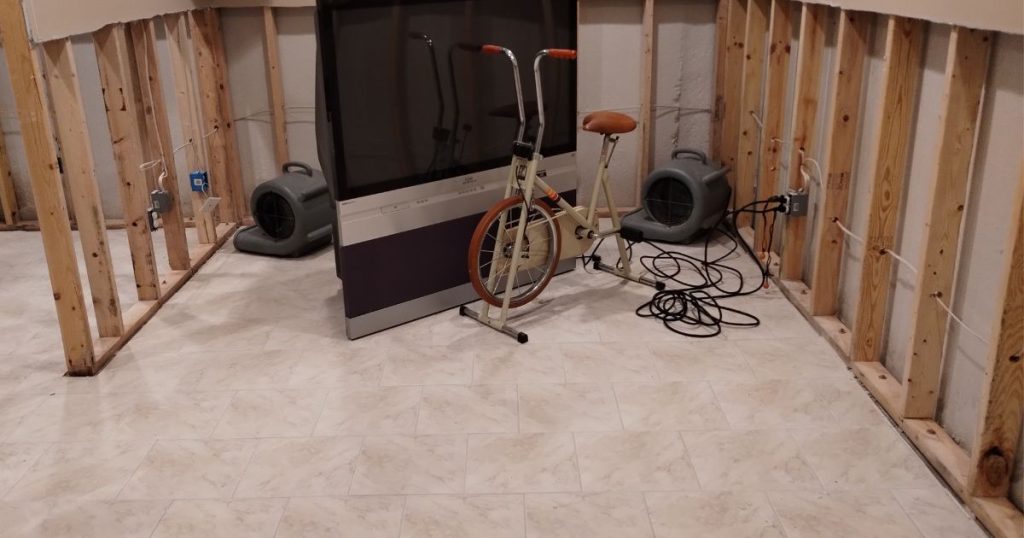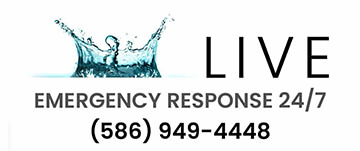If you are in need of drywall removal due to flood damage – Action Extraction Manages with experts care the restoration and removal of wet drywall. Contact us at (586) 949-4448 for 24/7 emergency assistance. Click here to learn more about our water damage cleanup services or Follow Us on Facebook!

Trust Action Extraction for Professional Restoration
When Removing Wet Drywall is Necessary:
Water damage in your home can be devastating, especially when it affects the drywall. Knowing when to remove wet drywall is crucial to preventing further damage and ensuring a safe living environment. At Action Extraction, we specialize in comprehensive water damage restoration services, including expert removal of wet drywall. Removing drywall after a flood is crucial in certain instances to keep property free from mold damage.
Here’s everything you need to know about this process and why Action Extraction is the best choice for your restoration needs.
Understanding When Removing Wet Drywall is Necessary
The Impact of Water Damage on Drywall
Drywall is highly susceptible to water damage due to its absorbent nature. When exposed to moisture, it can become weakened, swell, and even support mold growth. If not addressed promptly, wet drywall can lead to structural issues and health hazards. Drywall is a cellulose material which is a favored food source for mold and needs to be serviced correctly to avoid dangers.
4 Signs You Need to Remove Wet Drywall
1) Visible Swelling or Warping:
If your drywall appears swollen or warped, it indicates significant water absorption and damage. Drywall can absorb standing water as high as 12″ in 1 hour. Trapped moisture in drywall is the #1 reason drywall acquires mold growth.
2) Discoloration and Stains:
Brown or yellow stains on drywall are signs of water damage that may necessitate removal. Colored spots and patches should be evaluated as mold can often appear as foreign colors.
3) Mold Growth:
The presence of mold on or behind the drywall is a clear sign that removal is needed to prevent health risks. Behind drywall is a common location to find mold on drywall as these locations are absent of air circulation and UV lighting.
4) Soft Spots:
Pressing on the drywall and feeling soft or mushy areas indicates severe water damage that requires removal. Do not open the wall as the presence of mold growth is likely. Disrupting an active colony of mold growth is like taking a tennis racket to a hornets nest, and will send invisible mold spores everywhere.
What is a Flood Cut and Why is It Necessary?
The Concept of a Flood Cut
A flood cut involves removing a contaminated section of drywall from the floor up to a certain height—typically 12″ 48″ above the visible water damage line or where the presence of water height is. This technique is essential for several reasons:
- Preventing Mold Growth: By removing wet drywall, you eliminate a potential breeding ground for mold and mildew.
- Ensuring Thorough Drying: A flood cut allows for proper air circulation, which helps dry out the wall cavities and prevents further moisture retention.
- Assessing Hidden Damage: This method allows professionals to inspect for hidden water damage within the walls, ensuring a comprehensive restoration process.

Why Choose Action Extraction for Wet Drywall Removal?
Expertise and Experience
With over [insert number] years of experience in water damage restoration, Action Extraction has the expertise to handle all aspects of wet drywall removal and flood cuts. Our certified technicians are trained in the latest techniques to ensure effective and efficient restoration.
State-of-the-Art Equipment
We utilize advanced equipment to detect moisture levels, perform precise flood cuts, and ensure thorough drying of affected areas. Our tools and technology allow us to provide top-notch service and achieve optimal results.
Comprehensive Restoration Services
At Action Extraction, we offer a full range of restoration services beyond wet drywall removal. From water extraction and structural drying to mold remediation and reconstruction, we handle every step of the process to restore your home to its pre-damage condition.
Customer-Centric Approach
Our commitment to customer satisfaction sets us apart. We understand the stress that water damage can cause, and we work diligently to provide prompt, reliable, and compassionate service. Our goal is to make the restoration process as smooth and hassle-free as possible for you.
Local Expertise
As a locally owned and operated company, Action Extraction understands the unique challenges of water damage in our community. We are dedicated to serving our neighbors with the highest level of care and professionalism.
Contact Action Extraction Today
When water damage strikes, knowing when removing wet drywall is necessary can save you time, money, and stress. Trust the experts at Action Extraction to provide the professional restoration services you need. Contact us today for a free consultation and let us help you restore your home to its original condition.
6 Common Questions on Drywall Removal After a Flood
Q. Why is drywall removal necessary after a flood?
The Importance of Removing Wet Drywall
A. Drywall removal after a flood is essential because drywall is highly porous, absorbs water quickly, and can stay wet for days which encourages mold growth. This absorption can lead to swelling, warping, and the development of visible mold. Removing wet drywall that is suspected as contaminated prevents structural damage and mitigates health risks associated with mold and mildew.
Q. How do I know if my drywall needs to be removed after a flood?
Identifying Water-Damaged Drywall
A. Look for visible signs such as discoloration, staining, swelling, and warping. If you notice any of these indicators, it’s likely that your drywall needs to be removed. Additionally, if the drywall feels soft or mushy when pressed, this is a clear sign of severe water damage that necessitates removal.
Q. What is a flood cut, and why is it performed?
Understanding the Flood Cut Technique
A. A flood cut involves cutting and removing a section of drywall that is suspect from the floor up to a certain height (typically 12″ – 48″ above the highest point of water damage). This method is performed to remove wet, contaminated drywall, allow for proper drying of the wall cavity, and prevent mold growth.
Q. Can I remove wet drywall myself, or should I hire professionals?
DIY vs. Professional Drywall Removal
A. While DIY drywall removal is possible, hiring professionals is recommended. Experts have the right tools and experience to perform thorough water damage restoration, including safe drywall removal, proper disposal of contaminated materials, and effective drying techniques to prevent further issues.
Q. How long does it take to dry out a wall cavity after removing wet drywall?
Drying Wall Cavities Post-Drywall Removal
A. The drying time for wall cavities depends on several factors, including the extent of the water damage, the humidity levels, and the drying methods used. Typically, it can take anywhere from a few days to a week to fully dry out a wall cavity using industrial-grade dehumidifiers and air movers.
Q. What steps should be taken after removing wet drywall?
Post-Drywall Removal Steps
A. After removing wet drywall, the following steps are crucial:
- Drying the Area: Use dehumidifiers and fans to ensure thorough drying of the wall cavity.
- Mold Remediation: Inspect for mold and treat affected areas to prevent growth.
- Restoration: Once the area is dry and mold-free, new drywall can be installed and painted to restore the original appearance of your walls.
Contact Action Extraction for Expert Drywall Removal After a Flood
For professional and reliable drywall removal after a flood, trust the experts at Action Extraction. Our team has the experience, tools, and dedication to handle all aspects of water damage restoration, ensuring your home is safe and restored to its pre-flood condition. Contact us today to schedule a consultation and learn more about our comprehensive water damage services.



